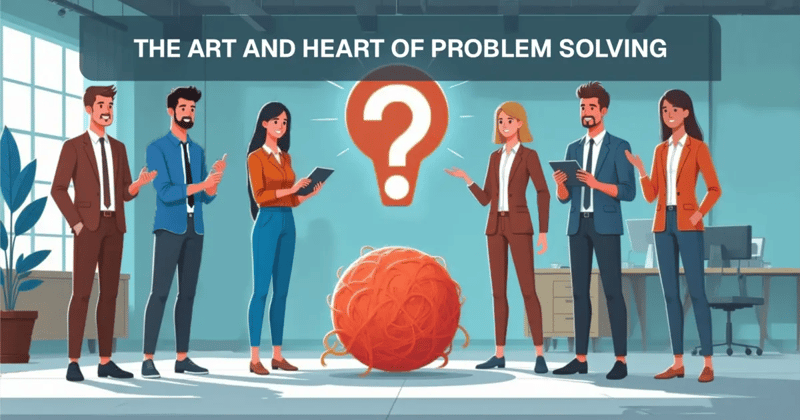Design thinking: A creative mindset for problem-solving

- What is Design Thinking?
- The 5 Phases of Design Thinking (without the jargon)
- 1. Empathize – Step into their shoes
- 2. Define – Pin down the real problem
- 3. Ideate – Generate possibilities
- 4. Prototype – Make it tangible
- 5. Test – Put it out there
- Applying Design Thinking in real life
- Checkout Pages
- Landing Pages
- Team Workflows
- When to use Design Thinking (and when not to)
- How to start today
- Taking it to the next level
Some of the best solutions don’t start with a lightbulb Eureka! moment. They usually start with a pause – the kind where you hit a wall and think, there has to be a better way to do this.
You’ve been there.
At work, maybe your campaign stalls, users get stuck on a product feature, or your team keeps looping through the same roadblocks. At home, it could be as simple as figuring out how to make dinner prep less chaotic or finally organizing a cluttered space.
Different contexts, same problem: traditional fixes rarely solve the root issue. Adding more effort, tools, or meetings won’t cut it. That’s where design thinking comes in – a structured, human-centered approach that gives you a creative mindset for problem-solving. Instead of rushing to solutions, you step back, understand the real need, and test smarter ideas that lead to better outcomes.
So, what exactly is this approach.
What is Design Thinking?
Design thinking is a human-centered problem-solving process that helps you understand people, generate ideas, and test solutions.
It’s not about being artistic – it’s about being systematic, empathetic, and iterative. Even if you’re not a designer, design thinking helps you:
- Identify the real problem instead of just symptoms
- Generate ideas that solve user pain points
- Test and refine solutions quickly
While it forms the foundation of modern UX strategy, its principles can improve any problem-solving process, from campaigns to workflows to daily life.
The 5 Phases of Design Thinking (without the jargon)

1. Empathize – Step into their shoes
Focus on real people, not abstract personas. Watch, listen, and understand the why behind their actions.
Quick check: Are you seeing what’s actually happening, or just assuming?
2. Define – Pin down the real problem
Problems are tricky and often hide under the wrong label. Boil it down to a clear statement.
Quick check: Can you phrase the problem in one sentence? If it feels vague, ask why until you get to the real issue.
3. Ideate – Generate possibilities
Brainstorm without judging. The first idea is rarely the best.
Goal: 10 ideas, even wild ones – the craziest often sparks the best solutions.
This phase fuels creative problem-solving for campaigns, products, or workflows.
4. Prototype – Make it tangible
Stop debating in your head. Build a version people can see, use, or experience.
Quick test: Can you try a simple version in a few minutes-like a rough mock-up, mini experiment, or role-play? Then it’s a prototype.
This step helps refine UX strategy before investing heavily.
5. Test – Put it out there
Your idea isn’t done until people interact with it. Observe, ask, and adjust.
Ask: “What’s confusing? What would you change?” – that’s where real insights lie.
Testing improves user understanding and experience. If needed, loop back to any previous phase and iterate.
Pro Tip: Practice with a small, everyday problem. The best way to learn this framework is to apply it to a low-stakes challenge in your daily life. For example, let’s solve the problem of a consistently messy kitchen counter- empathize by noticing why clutter builds up, define the real issue (e.g., “no easy system for daily mail”), brainstorm quick fixes, prototype by trying just one (like a simple tray), and test if it works for a few days. This builds the muscle memory for tackling bigger challenges at work!
Applying Design Thinking in real life
Sometimes, solutions don’t appear all at once. They emerge quietly when you pause, notice what’s happening, and experiment with small changes. Let’s see how this mindset plays out in everyday scenarios – from product pages to team workflows.
Checkout Pages
A checkout page looks polished, but users hesitate at the final step because they are unsure about shipping costs or delivery times. Observing their behavior reveals the friction. A small tweak, like a clear cost summary and estimated delivery, makes the process feel easier. People complete their purchases more confidently, improving user experience and driving better results.
Landing Pages
A landing page attracts clicks, but sign-ups don’t follow. Looking closer, visitors like the product but hesitate because the promise doesn’t feel real. Adding a small proof, such as a short story or testimonial, builds trust. Applying this iterative, user-focused approach helps increase conversion rates and engagement.
Team Workflows
At work, teams sit through daily standups, but projects barely move. Listening closely, the real problem is unclear ownership and small decisions slipping through the cracks. A short experiment with shorter updates, visible task boards, and simple rules for blockers restores momentum. This same problem-solving mindset can optimize team collaboration as effectively as it improves products or campaigns.
What ties these moments together is simple: observe carefully, understand the real problem, explore possibilities, try small experiments, and see what works. This is design thinking in action – not a checklist, but a practical, human-centered framework that turns small insights into measurable results, whether you are solving problems for users, customers, or your own team.
When to use Design Thinking (and when not to)
Design thinking works best for messy, human-centered, high-impact problems. When the real issue isn’t clear, users behave unpredictably, or traditional approaches keep failing, it pays to pause, observe, and iterate.
Clear technical fixes, one-off urgent tasks, or minor routine tweaks? Skip the process and act fast. Use design thinking where it actually moves the needle, not where it just adds meetings, confusion, or extra work. That’s how you get smarter solutions without wasting time.
How to start today
Pick one real problem you’re facing at work – campaign drop-offs, a messy workflow, or a stalled project – and take a first step.
- Observe first: Watch what’s happening. Don’t guess. Look for where users, leads, or team members get stuck or frustrated.
- Frame the real problem: Write it down in one sentence. If it feels vague, dig a little deeper.
- Try a small experiment: Send a revised email, tweak a workflow, or mock a feature. Keep it tiny, fast, and reversible.
- Learn and iterate: See what works, note what doesn’t, and adjust. Repeat. Small steps compound.
No need for perfection, no big meetings, no endless planning. Just start, test, learn, repeat. That’s how design thinking goes from theory to action.
Taking it to the next level
Design thinking transforms problem-solving from a stressful reaction into a creative process. It’s a skill that serves you whether you’re planning a meal or a multi-channel campaign. For us, it’s more than a methodology; it’s the reason we built our Demand Generation and Website Design services — to systematically solve complex business problems with a human-centered lens. Wherever your challenges lie, we encourage you to take that first small step. Observe, define, and test. The solution is closer than you think.
Related content worth reading

Thinking like a user – The psychology behind UX
Discover how psychology shapes UX decisions. The patterns are subtle, but the impact is huge and lasting.

CMS Trials: A Field Journal from My Log
Discover why choosing the right Content Management System is crucial for effective website management and growth.
